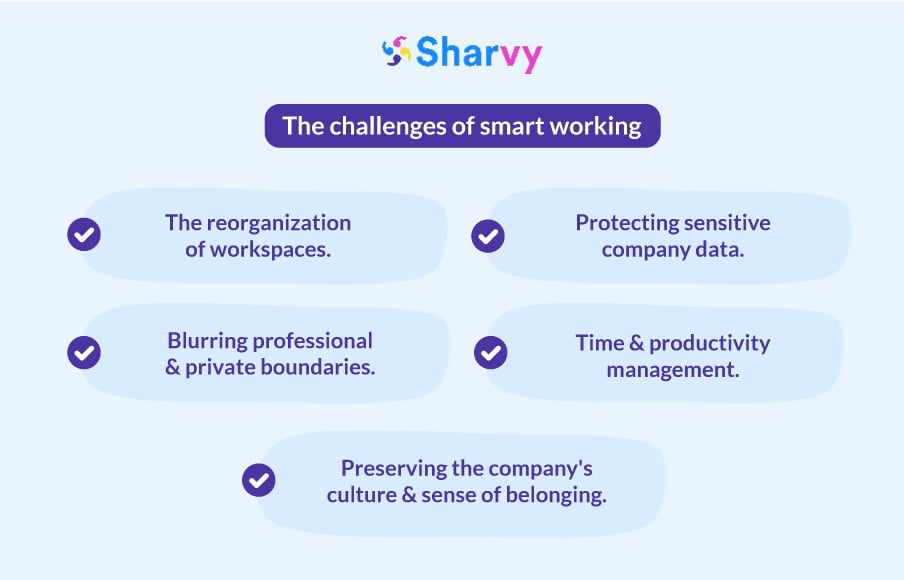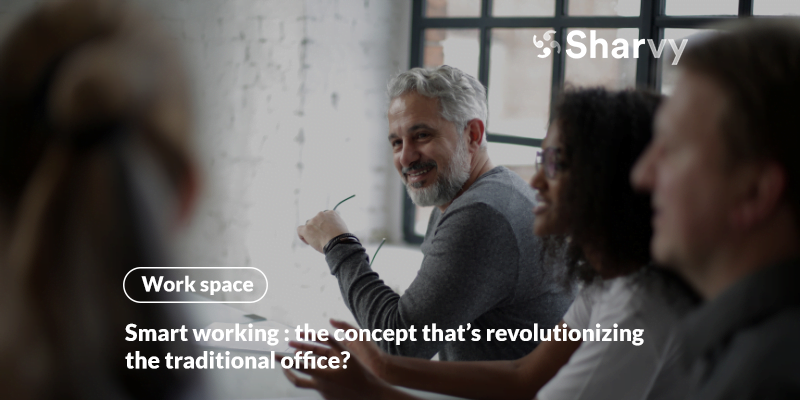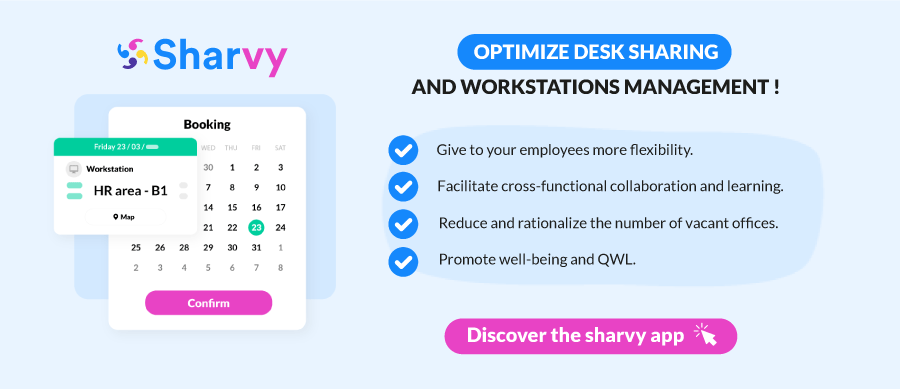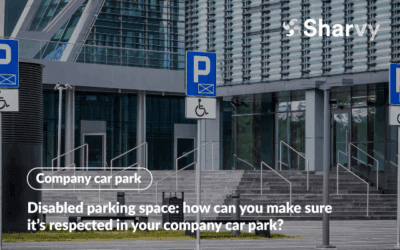Smart working is emerging as a beacon guiding companies towards new organizational horizons within the business ecosystem.
It’s shaping a new era where efficiency meets flexibility, and technology becomes a new ally of performance. That’s why more and more employers are intrigued by this innovative approach and want to know more.
If that’s the case for you, good news! In this article, we deeply dive into the heart of this metamorphosis, exploring the many facets of smart working, its challenges & implications for the redefinition of contemporary professional standards.
What is smart working? Definition & origins.
The origins of smart working lie (obviously) in teleworking. Highlighted by the health crisis, it has become a standard many companies adopt. However, it involves adhering to predefined working hours & is limited (in most cases) to the employee’s home.
Smart working is an extended vision of teleworking. It abolishes fixed working hours and means that employees can work wherever they like, like digital nomads (cafés, airports, coworking spaces, etc).
As a result, it is an innovative concept that reflects companies’ desire to embrace an organizational culture focused on performance, innovation, and employee satisfaction.
In this sense, smart working is based on four fundamental concepts.
- Flexibility in time and space has become a cornerstone, enabling employees to deploy their skills regardless of location constraints and working hours. As a result, the organizational rigidity of the past is being abandoned in favor of more agile working conditions. For example, in an international company, an employee might choose to work from a coworking space while traveling, while staying connected with their team through digital tools.
- At the same time, individual autonomy is a cornerstone, giving employees responsibility for managing tasks and driving a greater sense of commitment and efficiency. Smart working thus offers a more cross-functional approach to the business world, based on empowerment, autonomy, and the trust placed in employees. Take the example of a startup that gives its developers the freedom to choose their working hours and organize themselves autonomously, which promotes creativity and innovation.
- Technology intrinsically supports this approach by facilitating remote collaboration and guaranteeing fluid communication. A company might, for example, integrate project management platforms and virtual meeting rooms to allow its teams spread across different continents to work together in real time.
- Finally, focusing on results transcends the traditional need for a physical presence at work. By opting for smart working, employers favor an achievement-based assessment, driving a culture geared towards performance and achieving organizational objectives. For example, a marketing company could measure the success of a campaign not by the number of work hours, but by the impact generated and the objectives achieved.
As a result, these four intertwined pillars define the complex ecosystem of intelligent working, reaffirming its relevance in the contemporary professional landscape.
Smart working : a win-win model for employees and the company?
The health crisis has created an urgent need for reinvention, and businesses have understood this. By offering a flexible and innovative framework, smart working is set to become “the new working norm”, eliminating the enslaving image of work & offering a multitude of benefits for both companies and their employees.
1. The benefits of smart working for businesses.
There’s no doubt about it : the 1er advantage for businesses is economic. They continue to maintain physical offices but rationalize their square meters. Office space is reduced (which saves costs) and used for other purposes.
For example, many companies have decided to create corpoworking spaces where employees and people from outside the company can work together. This can include service providers, freelancers, and even young start-ups! It’s an innovative way of optimizing and remodeling unoccupied square meters by renting or lending them (according to the company’s wishes) to workers searching for a spirit of sharing.
At the same time, smart working enables companies to tap into an international talent pool. The search for new profiles to recruit is much broader since location is no longer a constraint on recruitment. This feature also has a positive ecological impact, if only regarding transport-related savings.
What’s more, smart working enhances talent retention by meeting employees’ growing expectations in terms of flexibility. Remember that the best employer brands are found in organizations that respect the well-being of their employees and the working environment.
2. The benefits of smart working for employees.
Smart working offers employees a better work-life balance, improving overall well-being. The ability to set their hours and work remotely means they can better manage their family and personal commitments.
At the same time, smart working reduces the strain of daily commuting, which can considerably improve employees’ quality of life. By reducing the number of journeys to and from work, employees are less stressed about travel, but they also save time and help to reduce their carbon footprint.
Similarly, employees can choose where they feel most productive, whether at home, in a coworking space, or in a café. This personalization of the working environment can significantly impact their motivation and creativity.
Ultimately, smart working offers employees the flexibility they need to balance their professional and personal responsibilities, reduce the constraints associated with travel, and personalize their working environment, helping improve their quality of life at work.
Adopting smart working : 5 challenges (and our top tips) to remember!
Although smart working undeniably has many advantages, it is crucial to recognize and understand the challenges that accompany this organizational model before adopting it. This prior awareness is essential to anticipate potential obstacles.

1. Redesigning your workspaces as part of smart working.
There’s no doubt about it : as part of smart working, your working environment needs to adapt to a flexible working model.
As a result, each area of your business needs to respond to a specific activity. There’s no need to carry out major works; it’s more a question of optimizing and fitting out varied, evolving, and modular spaces.
So you need to offer a variety of spaces to boost everyone’s commitment and productivity. For example, think about spaces where audio and visual confidentiality is respected (phoneBooth, meeting box, huddle room, etc), so that your face-to-face staff can exchange ideas with those working remotely. You can also plan more collaborative spaces, with a few tables and chairs that can be used for a variety of exchanges.
Don’t forget that your employees are looking for real added value when they come to your company premises. That’s why they need to remain attractive, not just as a place to work, but as a meeting place where your employees can enjoy each other’s company!
As a result, one of the major challenges is the need to rethink the traditional design of your premises to encourage collaboration, agility, and efficiency among your teams.
But don’t forget one important point : when you redeveloped your premises, you most likely chose to reduce the surface area to save costs (obviously, this was a wise move). However, your employees may be worried about not having a workstation when they arrive on-site. So what can you do?
✔️ Our advice ?
In the context of smart working, the reorganization of your premises must be accompanied by the definition of the desk-sharing ratio. This is the ratio between the number of individual workstations available and the number of employees in your company.
To define this, you should know that a workload ratio of 0.8, i.e. 8 workstations per 10 employees, is the ratio that can naturally be implemented without teleworking. In other words, only with a “classic” company cycle (business travel & training days, leave, sickness, absences, etc).
As you will have realized, this is not a rate that corresponds to a company that has adopted smart working insofar as ¾ of the time, teams are working remotely.
On the other hand, an expansion rate of 0.5, i.e. 5 workstations for every 10 employees, may be more appropriate for a company with an ultra-nomadic workforce.
At the same time, using a desk booking solution is essential. This lets your employees reserve a workstation and avoid numerous pitfalls (lack of space, overbooking, discomfort, dissatisfaction, etc).
That’s where the Sharvy Workplace Management solution comes into its own! It enables your employees to anticipate their needs up to 4 weeks in advance, and the application can also be interfaced with the daily tools you use : HRIS, access control, authentication, etc.
2. Preserving the company’s culture and sense of belonging.
Smart working leads to a physical dispersal of your employees, compromising the informal interactions that help build team spirit.
That’s why you must adopt a proactive and strategic approach to maintaining a strong corporate culture, encouraging your employees’ commitment, and transmitting organizational values despite the distance.
Similarly, recognizing individual and collective achievements is crucial to maintaining morale and strengthening the sense of belonging. So make sure that virtual reward schemes and special mentions at online meetings are mentioned to celebrate your employees’ contributions and foster a positive environment.
✔️ Our advice ?
Make an effort to communicate regularly and transparently about your company’s values, objectives, and successes. At the same time, organize regular online meetings, virtual seminars, and remote team-building sessions that can encourage informal interaction, stimulate team spirit, and strengthen the feeling of belonging to the company.
For example, it’s common practice to organize weekly virtual cafés where your staff can chat informally about their projects, professional experiences, and topics outside of work.
3. The blurring of the boundaries between professional and private life.
One of the significant challenges of smart working (for some of your employees) is the difficulty separating work from private life because of the blurring of physical and temporal boundaries between these two spheres.
In the context of smart working, your employees may be confronted with professional demands outside their “normal” working hours, compromising their ability to disconnect from the professional context. Unfortunately, this lack of boundaries can have the opposite effect, leading to a deterioration in the balance between work and personal life, potentially leading to work overload and increased stress levels.
In addition, the advent of digital technologies, while facilitating remote working, can also contribute to stress among your employees. Constant availability (via electronic devices) can create an implicit pressure to be constantly connected and responsive, possibly leading to difficulties in taking necessary time out. This intensive use of technology can also raise concerns about personal data protection and confidentiality, adding a further dimension to perceived stress.
✔️ Our advice ?
Flexibility (taken to extremes) in the context of smart working can lead to certain excesses.
This is why, as an employer, you must implement appropriate rules to enable this right to be exercised. Of course, you are free to introduce the necessary measures and tools to ensure that your employees can disconnect.
Michelin, for example, has set up a digital tool that sends an alert to employees whenever they log on to their inbox (remotely) more than 5 times outside working hours.
Another (non-binding and effective) measure is to add a message to employees’ email signatures mentioning the existence of the right to disconnect. For example : “If you receive this message after 6pm, you are not obliged to reply“.
In short, adopting these disciplinary practices, combined with reasonable organization, will mitigate the difficulty inherent in separating professional and private life in the context of smart working.
4. Vigilance about the data security inherent in smart working.
There’s no doubt that data is one of a company’s most precious assets. Like a data leak, a hack can damage a company’s reputation and have significant financial and logistical consequences.
In the context of smart working, remote working (from home, coworking, corpoworking, etc.) is much more regular than in a “traditional” organization. As a result, remote connections are more frequent, and, unfortunately, these can be subject to security breaches, jeopardizing the confidentiality of sensitive information.
In addition, the increasing reliance on online communication platforms and cloud storage services exposes businesses to the risk of data compromise. Cybercriminals often target these channels to gain access to confidential information, whether through phishing or other sophisticated attacks.
Finally, the diversity of international data protection regulations makes it challenging to implement uniform security policies. As a result, companies have to navigate through disparate legal requirements, adding another layer of complexity to data security management.
That’s why data security in smart working is a significant challenge, requiring a strategic approach and the rigorous implementation of protection measures.
✔️ Our advice ?
To protect your data effectively, you can first use a VPN to secure your employees’ connections when they access your company’s resources from public networks. A VPN encrypts your data. So, if hackers manage to intercept your data, they won’t be able to see what’s on it.
At the same time, you can use multi-factor authentication (MFA). This reinforces the security of accounts and access to applications used internally. Not only will your employees have to enter their password(s) to access their accounts, but they will also receive a code via SMS to enter when they log in.
In addition, consider introducing strict policies on using personal devices for work, including security requirements such as up-to-date anti-virus software. Finally, use solutions like Microsoft Azure, with advanced encryption and access control features.
5. Time and productivity management.
Remember that with smart working, employees (most of the time) carry out their tasks remotely and autonomously. But flexibility also means organizational freedom.
However, some employees may need direct supervision from a work environment to maintain self-discipline. In this sense, procrastination and lack of structure can lead to various delays in completing assigned tasks.
At the same time, it should not be forgotten that remote communication can also lead to response delays. This is particularly the case if your employees work in different time zones. This can slow down the decision-making process and lead to lost time in the progress of projects.
✔️ Our advice ?
You can adopt different strategies to overcome these challenges inherent in smart working.
Communicate expectations in terms of results, deadlines, and objectives. Ensure that each team member understands their responsibilities and the deadlines associated with their or tasks.
At the same time, establish clear communication guidelines and set specific times for your most important meetings. This will enable your staff to plan their day more efficiently.
Encourage your employees to draw up daily task lists. Planning can help them stay organized, prioritize activities, and focus on achieving objectives. You can offer them various project management tools, such as Asana, Notion, Trello, etc.
Finally, remember to recognize the challenges of smart working (incredibly remote working). Offering emotional support to your employees builds resilience & has a direct impact on productivity and self-discipline.
In conclusion
There’s no doubt about it: smart working is an innovative model that redefines the very nature of work. It offers unprecedented flexibility, enabling employees to thrive in a more agile working environment, where autonomy and responsibility are given pride of place.
Consequently, it is not ‘simply’ a response to current contingencies, but rather a catalyst for lasting transformations. In the years to come, there is every chance that smart working will remain an essential pillar of global professional dynamics. Changing attitudes and working practices, combined with the emergence of innovative technologies, point to a working landscape where flexibility is becoming the norm.
For smart working to reach its full potential, ongoing adjustments to company policies, management methods and individual skills will be essential.
Have a question? Check out the FAQ!
In which country is smart working most widespread and why?
Some countries stand out for their early adoption of smart working. These include Nordic countries such as Sweden, Norway, Denmark and Finland. If this concept is widespread in these countries, it is primarily because they have a work culture based on flexibility. But they also have a robust digital infrastructure and favorable government policies.
At the same time, note that according to a study by Eurofound (the European Agency for the Improvement of Living and Working Conditions), the Netherlands stands out regarding smart working. The study shows that almost 40% of Dutch people benefit from flexible working practices. This percentage can partly be explained by the fact that Dutch culture encourages a pragmatic approach to work, focusing on results rather than physical presence in the office.
In other European countries, such as France, the transition to smart working may be perceived as slower mainly because we have a culture where physical presence at work is (often) valued. French employers’ attitudes towards remote working may be more conservative, which makes the transition to smart working more gradual.
In addition, we have complex and rigid regulations. Although reforms have been introduced to encourage flexibility in France, the regulatory framework can still challenge companies looking to adopt more flexible working models.
Smart working : a new trend that's here to stay?
There’s no doubt about it : the lessons learned from the COVID-19 crisis have highlighted the ability of remote working to maintain productivity while offering work-life balance. Perceived benefits such as reduced travel costs, global talent diversification, and a reduced carbon footprint add to the appeal of smart working.
However, its sustainability will depend on the ability of companies to adapt their policies, ongoing technological advances, and regulatory adjustments to ensure fairness and employee well-being. If proposed organizations integrate smart working into their corporate cultures holistically, this trend will likely continue, reshaping how we think about and do work!
Want to learn more? Check out latest articles!
Company car park rules and regulations: what every employer needs to know!
Discover the essential company car park rules and regulations in the UK and ensure your business stays safe, accessible, and compliant.
The checklist for choosing car park reservation software!
How do you choose car park reservation software for your business? What features should you choose? The answers are right here.
Disabled parking space: how can you make sure it’s respected in your company car park?
Why and how can you ensure the availability of a disabled parking space in your company car park? Discover practical advice and solutions.
Subscribe to our newsletter!
PARKING & WORKPLACE MANAGEMENT SOLUTION
Car park management - Charging points monitoring - Desk booking - Booking by time slots
SUBSCRIBE TO THE NEWSLETTER
Receive the latest Parking & Workplace trends by email once a month.












